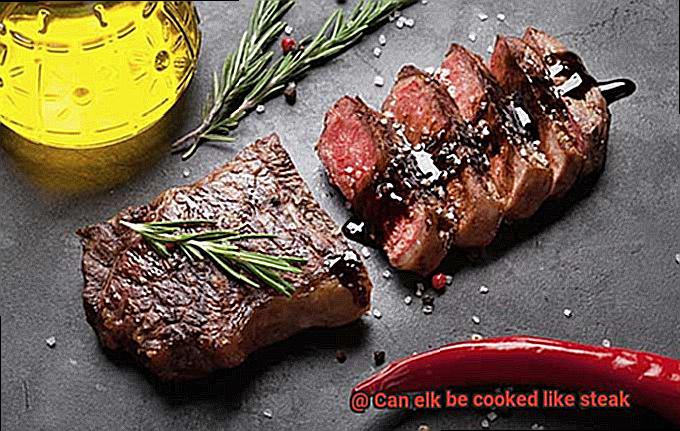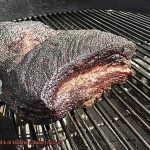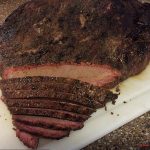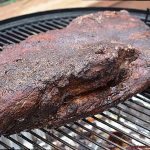Ever wondered if elk can be cooked like steak? You’re not alone. With its robust flavor and lean meat, elk bears a striking resemblance to beef, making it an ideal choice for steak enthusiasts looking to explore beyond traditional options. Elk steaks may not be a staple in every kitchen, but they present a tantalizing opportunity to experiment with a unique and delicious alternative.
In this blog post, we’ll dive deep into the tantalizing world of elk steaks, shedding light on the advantages and potential disadvantages of cooking this majestic game meat. Whether you’re a seasoned chef or an adventurous foodie, we’ve got you covered.
Advantages of Cooking Elk like Steak:
- Flavorful and Nutritious: Elk meat boasts intense and gamey flavors that are sure to excite your taste buds. Its lean nature ensures a tender and succulent eating experience while providing a healthier alternative with lower fat and cholesterol content.
- Novelty Factor: Elk steaks offer an exciting twist to traditional steak fare, elevating any meal to new heights. Impress your guests with a dish that combines elegance and unconventional appeal.
- Versatility in Cooking: Grill it, broil it, pan-sear it – elk steaks can handle it all. This versatility allows for experimentation, helping you find the perfect flavor and texture that suit your preferences.
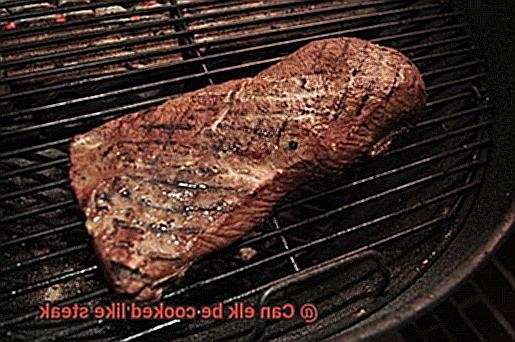
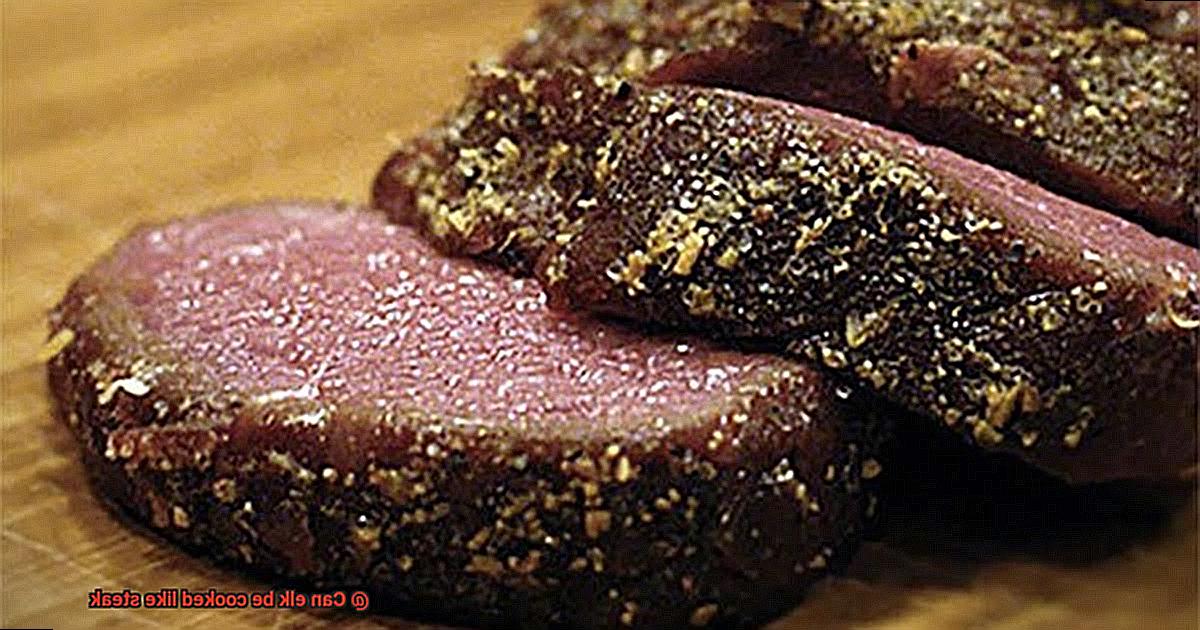
Potential Disadvantages:
- Availability and Price: Finding elk meat may pose a challenge as it may not be readily available in all regions. Specialty butcher shops or online sources might offer elk, but be prepared for potentially higher costs compared to traditional beef cuts.
- Lower Fat Content: While leanness is advantageous for health-conscious individuals, handling elk meat requires care during cooking. The reduced fat content makes it more prone to drying out if not handled properly.
Considerations and Tips:
- Ensure Proper Marination: Tenderize the meat and enhance flavors by marinating elk steaks before cooking. Opt for marinades that complement the inherent gamey taste, such as woody herbs, garlic, and red wine.
- Cooking Time and Temperature: Due to its leanness, elk meat cooks faster than beef. Aim for a medium-rare doneness to preserve its juiciness and tenderness.
So, if you’re ready to embark on a mouthwatering adventure with elk steaks, let’s get cooking.
Contents
What Makes Elk Steak Unique?
Elk steak is a truly unique culinary experience. Its distinct flavor, tenderness, and nutritional benefits set it apart from traditional beef steak.
First and foremost, the taste of elk meat is unlike any other. It is rich, savory, and slightly sweet, with a hint of gaminess. This unique flavor profile is a result of the animal’s natural diet, consisting of grasses, herbs, and shrubs found in its natural habitat.
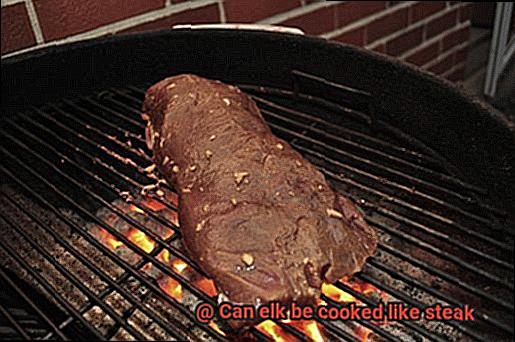
Another factor that makes elk steak stand out is its tenderness. Elk meat is incredibly tender and juicy, making each bite a delight. The low fat content in elk meat contributes to its leanness, resulting in a leaner cut of steak. Additionally, the muscles in an elk are used differently than those in cattle, leading to a more tender texture.
In terms of nutrition, elk steak offers numerous advantages. It is lower in fat and calories compared to beef, making it a healthier option for those watching their waistline. Furthermore, elk meat is rich in protein and essential nutrients such as iron and zinc.
When cooking elk steak, it is important to handle it with care due to its unique characteristics. Overcooking can quickly make elk meat tough and dry. To achieve optimal flavor and tenderness, it is recommended to cook elk steak to medium-rare or medium doneness. Marinating the meat beforehand can also enhance its flavor and keep it moist during cooking.
Whether grilled, pan-seared, or oven-baked, elk steak can be cooked using various methods. Grilling is a popular choice, where the marinated elk steak is placed on a hot grill and cooked for about 4-6 minutes per side for medium-rare doneness.
Benefits of Cooking Elk Steak
- Lean and Healthy: Elk steak is leaner than traditional beef, making it a healthier option for those concerned about their fat intake. With less saturated fat and cholesterol, elk steak is heart-healthy and suitable for individuals with dietary restrictions or health conditions like high blood pressure or high cholesterol.
- Nutrient-Rich: Elk meat is packed with essential nutrients such as iron, zinc, and B vitamins. Iron is vital for red blood cell production and energy metabolism, while zinc supports immune function and wound healing. B vitamins are essential for brain health and energy production.
- Unique Flavor Profile: Cooking elk steak offers a chance to diversify your protein sources and enjoy a unique flavor profile. Elk meat has a slightly gamey taste that adds depth to dishes. It pairs well with different seasonings and marinades, enhancing its natural flavors and creating a memorable dining experience.
- Sustainable Choice: Elk meat is considered more sustainable compared to traditional beef. Elk are typically raised in free-range environments and have a lower impact on the environment due to their natural grazing habits. Additionally, elk hunting is regulated in many areas, ensuring stable and healthy populations.
- Culinary Adventure: Cooking elk steak can be an exciting culinary adventure. It challenges you to work with a different type of meat and experiment with new recipes and cooking techniques. Whether you grill, sear, or slow-cook elk steak, you’ll discover new flavors and textures that will elevate your culinary skills.
- Support Local Producers: Many regions have elk farms or ranches that raise elk for meat production. By purchasing elk meat and incorporating it into your meals, you are not only enjoying a delicious dish but also supporting local farmers and businesses. This contributes to the local economy and promotes sustainable agriculture practices.
Tips for Preparing Elk Steak
Elk meat is a lean and flavorful alternative to beef steak, perfect for grilling. To ensure a tender and juicy result, follow these essential tips for preparing elk steak.
Marinating for Flavor and Tenderness:
Marinating elk steak is crucial for maximizing flavor and tenderness. Prepare a marinade using ingredients like oil, vinegar, herbs, and spices. Allow the elk steak to marinate for at least a couple of hours or overnight in the refrigerator. This process not only infuses the meat with delicious flavors but also helps to tenderize it.
Proper Seasoning:
Elk meat has a slightly gamey flavor that can be enhanced or balanced with the right seasoning. Create a seasoning blend using garlic, rosemary, thyme, black pepper, and sea salt. Apply the seasoning evenly on both sides of the steak and let it sit for a few minutes before cooking. This allows the flavors to penetrate the meat and enhances its natural taste.
Cooking to Perfection:
Cooking elk steak to the right level of doneness is crucial for maintaining its tenderness and juiciness. Use a meat thermometer to monitor the internal temperature. For medium-rare, aim for an internal temperature of around 130-135°F, while medium doneness requires an internal temperature of 140-145°F. Be mindful not to overcook the steak, as it can result in tough and dry meat.
Resting for Juiciness:
After cooking, it’s important to let the elk steak rest for 5-10 minutes before slicing. This resting period allows the juices to redistribute throughout the meat, resulting in a more flavorful and tender final product.
Slicing Against the Grain:
To achieve maximum tenderness, slice elk steak against the grain. The grain refers to the direction in which the muscle fibers run. Cutting across the grain breaks up the tough muscle fibers, making the meat easier to chew. It is recommended to slice the elk steak into thin strips, perpendicular to the grain, before serving.
How to Marinate Elk Steak
Marinating elk steak is a great way to enhance its flavor and tenderness. Elk meat is naturally lean and can be tough if not properly marinated and cooked. Marinating helps to break down the muscle fibers and infuse the meat with delicious flavors.
When marinating elk steak, it is important to choose a marinade that complements the rich, gamey flavor of the meat. A marinade that includes ingredients like red wine, garlic, herbs, and spices can help to enhance the natural flavors of the elk.
To marinate elk steak, start by preparing the marinade. In a bowl, combine your desired ingredients such as red wine, soy sauce, olive oil, minced garlic, chopped herbs like rosemary or thyme, and any additional spices or seasonings you prefer. Whisk the marinade together until well combined.
Next, place your elk steaks in a resealable plastic bag or a shallow dish. Pour the marinade over the steaks, making sure they are fully coated. Seal the bag or cover the dish with plastic wrap and refrigerate for at least 4 hours or overnight. The longer you marinate the steaks, the more flavorful they will become.
While marinating, it is important to turn the elk steaks occasionally to ensure even distribution of the marinade. This will help to achieve maximum flavor penetration.
When you are ready to cook the marinated elk steaks, remove them from the refrigerator and let them come to room temperature for about 30 minutes. This allows for more even cooking.
Before grilling the steaks, make sure to preheat your grill to medium-high heat. Brush the grill grates with oil to prevent sticking.
Remove the elk steaks from the marinade and discard any excess marinade. Pat the steaks dry with paper towels to remove any moisture. This will help create a nice sear on the steaks.
Place the elk steaks on the preheated grill and cook for about 4-6 minutes per side, depending on the thickness of the steaks and desired doneness. For medium-rare, aim for an internal temperature of 130-135°F.
Once the steaks are cooked to your desired level of doneness, remove them from the grill and let them rest for a few minutes before serving. This allows the juices to redistribute and ensures a tender, juicy steak.
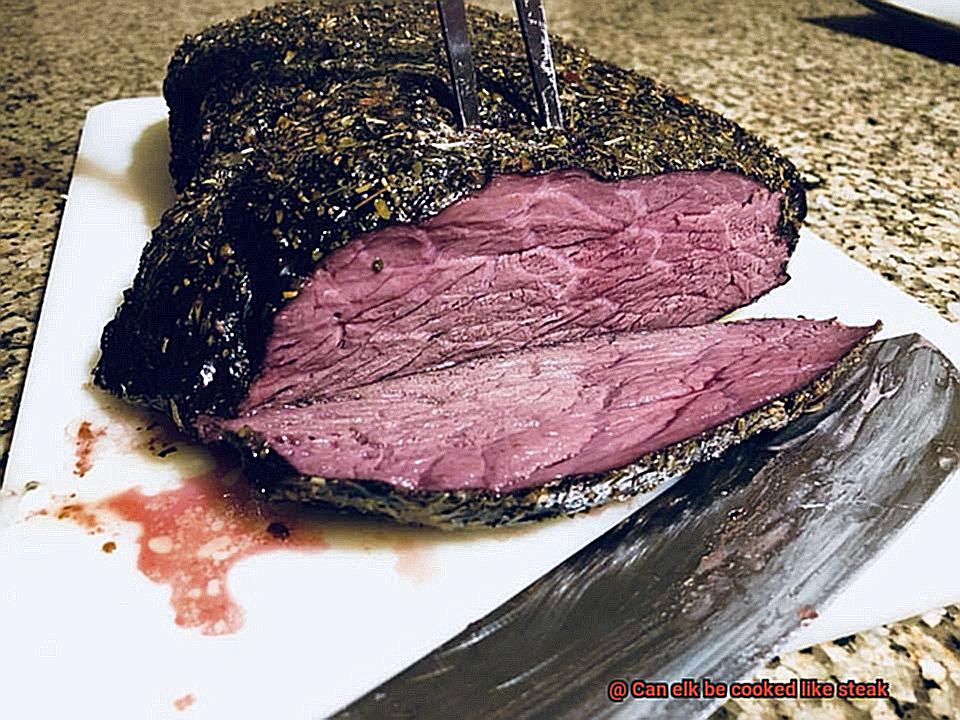
Marinated elk steak can be served as is or paired with your favorite side dishes like roasted vegetables or mashed potatoes. The marinated flavors will enhance the natural taste of the elk and create a delicious and satisfying meal.
Best Cooking Methods for Elk Steak
When it comes to cooking elk steak, there are several methods that can bring out the flavors and tenderness of the meat. One of the best methods is grilling. This allows the meat to cook evenly and develop a delicious charred crust on the outside while maintaining its juiciness on the inside. To ensure success, preheat the grill to a medium-high heat and brush the elk steak with some oil and seasonings before placing it on the grill.
Another popular method is pan-searing. This involves searing the meat in a hot skillet with some oil or butter until it develops a golden brown crust. After searing, let the steak rest for a few minutes to allow the juices to redistribute before slicing and serving.
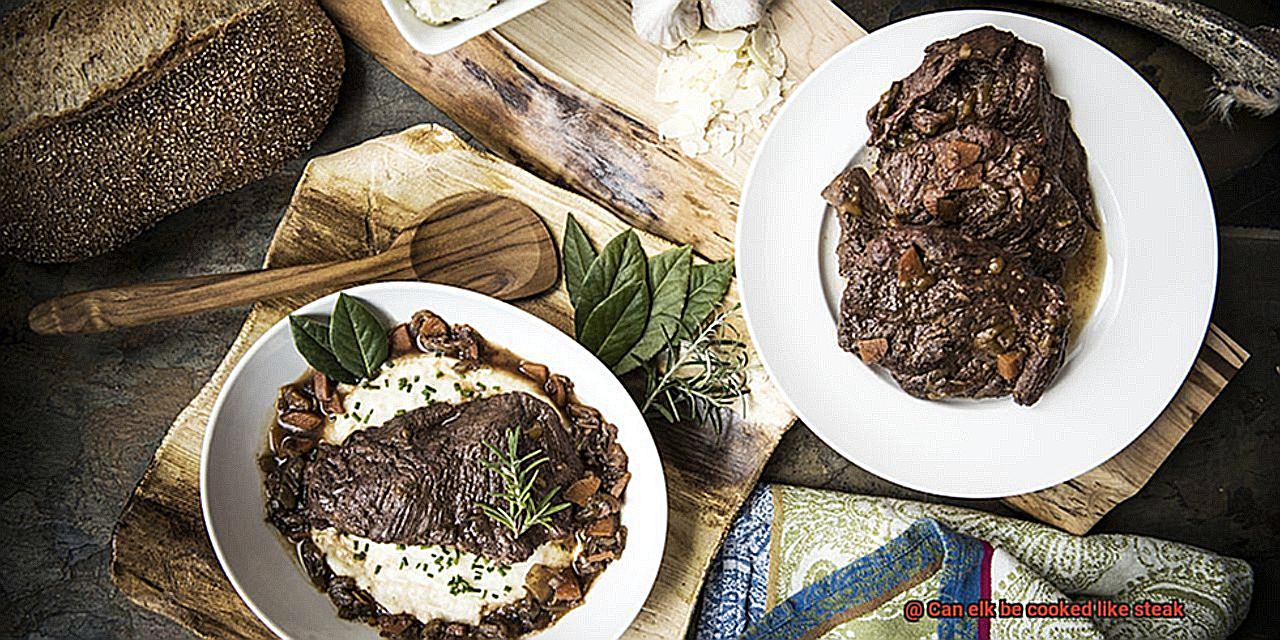
For those who prefer a more tender and juicy elk steak, sous vide cooking is an excellent option. This involves vacuum-sealing the meat and cooking it in a water bath at a precise temperature for an extended period. Sous vide ensures that the elk steak is cooked evenly and retains its moisture, resulting in a melt-in-your-mouth texture.
Marinating the elk steak before cooking can also enhance its flavor and tenderness. A simple marinade consisting of olive oil, garlic, herbs, and spices can help tenderize the meat and infuse it with delicious flavors. It is recommended to marinate the elk steak for at least 2 hours or overnight in the refrigerator before cooking.
Lastly, broiling is another great cooking method for elk steak. This involves cooking the meat under direct heat in an oven or broiler. To ensure a delicious crust on the outside, it is recommended to sear the elk steak on both sides in a hot skillet before transferring it to the broiler.
How to Grill Elk Steak
Grilling elk steak is a popular method of preparing this flavorful and lean meat. While the cooking process is similar to grilling beef steak, there are a few key differences to keep in mind. Here are some tips on how to grill elk steak to perfection.
Firstly, it’s important to select the right cut of elk steak for grilling. The most common cuts used for grilling are the loin and ribeye steaks. These cuts are tender and well-suited for high-heat cooking methods like grilling. It’s also a good idea to choose steaks that are about 1-1.5 inches thick, as thinner cuts can easily dry out during cooking.
Before grilling, it’s recommended to marinate the elk steaks for added flavor and tenderness. A simple marinade can be made using ingredients like olive oil, soy sauce, garlic, and herbs. Allow the steaks to marinate for at least 30 minutes, or up to overnight in the refrigerator, for maximum flavor infusion.
When it comes to grilling elk steak, preheating the grill is crucial. It’s best to preheat the grill to medium-high heat, around 400-450°F (204-232°C). This high heat helps to sear the steak quickly and lock in the juices.
Next, brush the grill grates with oil to prevent sticking. Place the marinated elk steaks on the grill and close the lid. Cook the steaks for about 4-6 minutes per side for medium-rare doneness. Keep in mind that elk meat cooks faster than beef, so it’s important to monitor the cooking time closely to avoid overcooking.
To achieve a perfect medium-rare elk steak, use a meat thermometer to check the internal temperature. The desired temperature for medium-rare is around 135°F (57°C). Remove the steaks from the grill when they reach this temperature and let them rest for a few minutes before serving. This resting period allows the juices to redistribute throughout the meat, resulting in a more tender and flavorful steak.
It’s worth noting that elk meat is leaner than beef, which means it can dry out more easily if overcooked. To prevent this, avoid cooking elk steaks beyond medium-rare, as they may become tough and dry.
Internal Temperature of Cooked Elk Steak
Grilling elk steak is an art, and achieving the perfect internal temperature is the key to a mouthwatering masterpiece. Here’s what you need to know to create a culinary sensation:
- The Magic Numbers: For a tantalizing medium-rare elk steak, aim for an internal temperature of 145°F (63°C). Craving something a bit more medium? Set your sights on 160°F (71°C). And if well-done is your jam, go for 170°F (77°C). These numbers will unlock the perfect balance of tenderness and succulence.
- The Temperature Detective: To ensure precision, arm yourself with a trusty meat thermometer. This mighty tool will guide you to steak nirvana. Just remember, insert it into the thickest part of the steak, avoiding any bones or fat that might throw off your reading.
- Avoid Dry Disasters: Elk meat dances on the edge of lean perfection, so be cautious not to push it too far. Overcooking will transform your dream dinner into a dry and tough nightmare. Instead, remove the steak from heat when it’s a few degrees shy of your desired internal temperature. The residual heat will work its magic as the steak rests, infusing it with succulence.
- Unleash the Flavor Flood: After grilling, grant your elk steak a well-deserved respite for about 5-10 minutes before serving. This moment of serenity allows the juices to flow freely throughout the meat, guaranteeing intense flavor and an oh-so-juicy bite.
- The Grill Maestro: Grilling or searing your elk steak will elevate it to new heights. The high heat creates a tantalizing outer crust while preserving the tender juiciness within. Embrace those mesmerizing grill marks that scream culinary prowess.
Side Dishes that Pair Well with Elk Steak
When it comes to enjoying a delicious elk steak, choosing the right side dishes can elevate your dining experience to a whole new level. The rich and bold flavors of elk steak pair well with a variety of side dishes that complement its taste and texture.
One classic side dish that goes perfectly with elk steak is a simple green salad. The crispness of fresh lettuce, combined with the tanginess of lemon vinaigrette, provides a refreshing contrast to the rich flavors of the meat. You can enhance the salad by adding ingredients like cherry tomatoes, cucumber slices, and crumbled feta cheese for extra flavor and texture.
If you’re looking for something heartier, roasted vegetables make an excellent choice. The natural sweetness and caramelization that occurs during the roasting process enhance the flavors of both the elk steak and the vegetables. Consider roasting a medley of colorful vegetables such as carrots, Brussels sprouts, and sweet potatoes. Drizzle them with olive oil, sprinkle with salt and pepper, and roast until they are tender and slightly crispy.
Another great option is creamy mashed potatoes. The smooth texture and buttery taste of mashed potatoes provide a comforting contrast to the lean and robust flavor of elk steak. You can make them even more indulgent by adding a hint of garlic, Parmesan cheese, or chives. For an extra touch of elegance, consider serving the mashed potatoes in a decorative bowl or shaping them into individual portions using a ring mold.
For those who enjoy a little bit of heat, spicy corn salsa is an excellent choice. The combination of sweet corn, spicy jalapenos, tangy lime juice, and fresh cilantro creates a burst of flavors that complements the richness of elk steak. This side dish adds a vibrant and zesty element to the meal, making it perfect for those who crave a bit of excitement on their plates.
If you’re looking for a side dish that incorporates grains, wild rice pilaf is a fantastic option. The nutty and earthy flavors of wild rice blend beautifully with the savory taste of elk steak. You can add additional ingredients such as dried cranberries, toasted almonds, or sautéed mushrooms to enhance the complexity of the dish. The combination of textures and flavors in this side dish will leave your taste buds satisfied and wanting more.
8zAOD0T0ZFI” >
Conclusion
In conclusion, elk can indeed be cooked like steak.
With its rich flavor and tender texture, elk meat is a perfect substitute for traditional beef steaks. Whether you prefer it grilled, pan-seared, or broiled, elk steak delivers a mouthwatering experience that rivals any prime cut of beef.
Its lean nature requires careful cooking to avoid drying out, but with the right techniques and seasoning, you can achieve a succulent and flavorful result.

